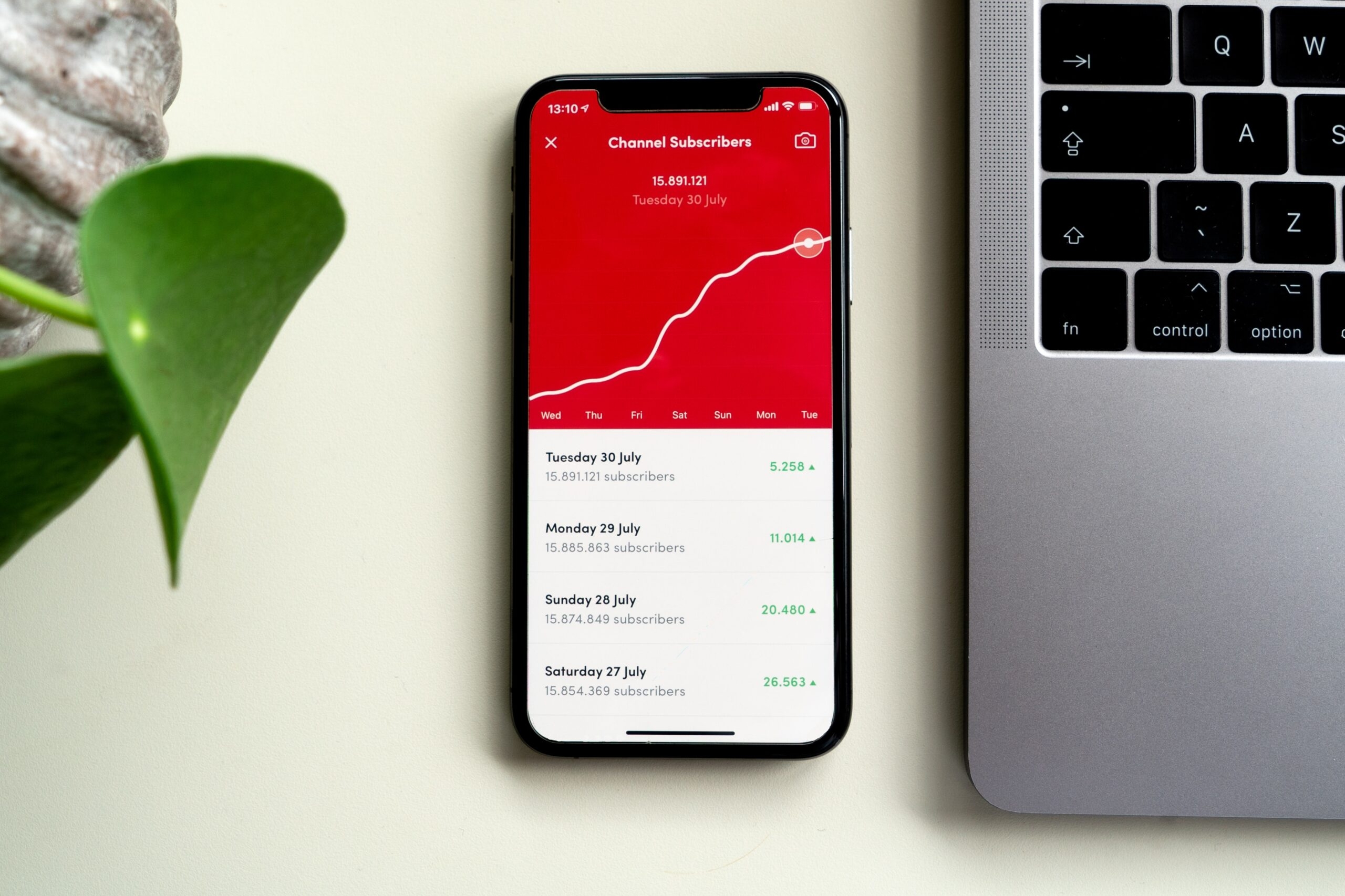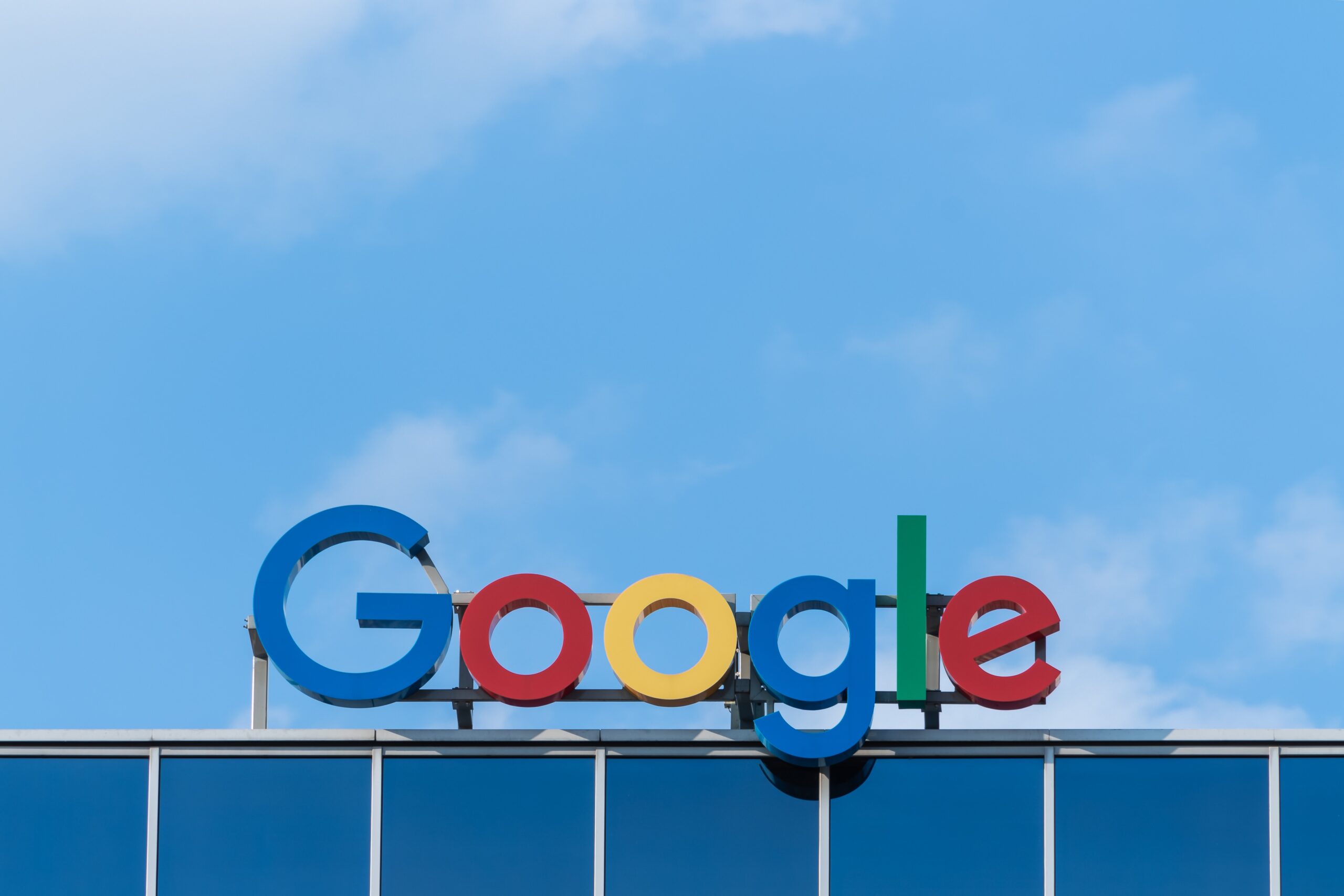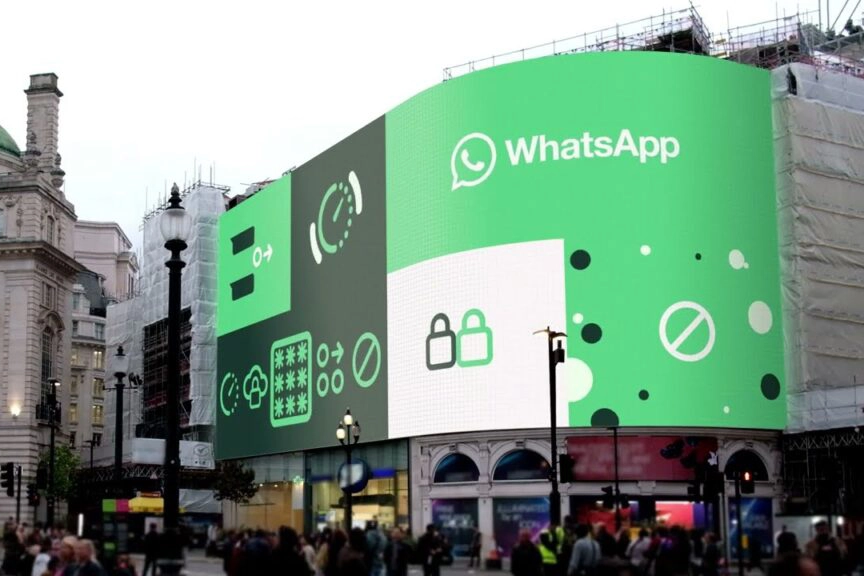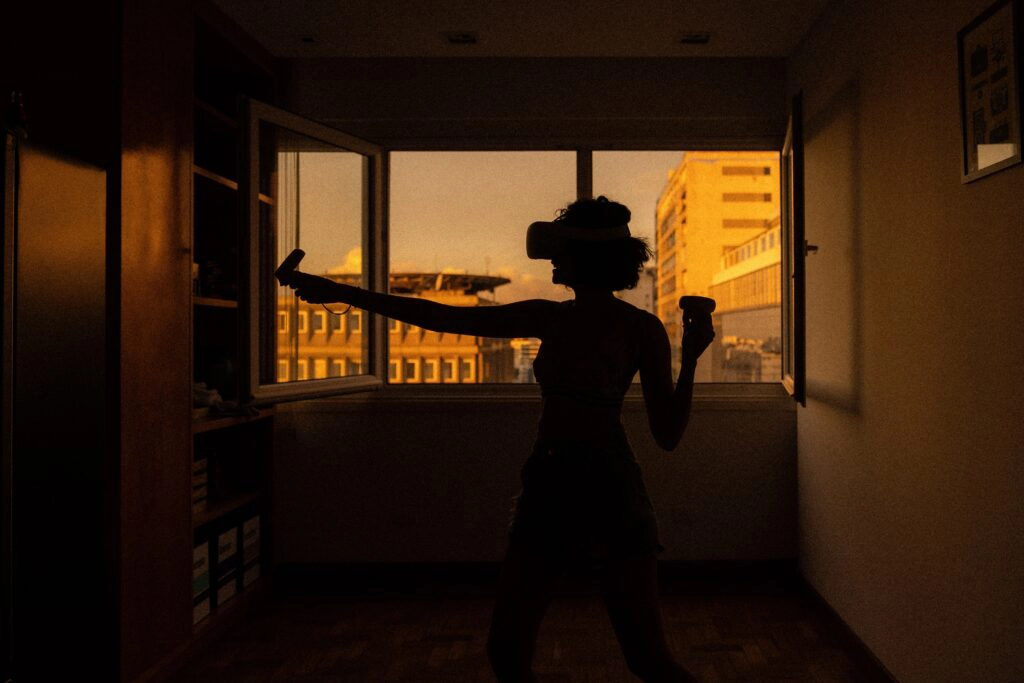Out of home Marketing
As organisations continue to navigate the intricacies of consumer engagement in the modern marketing landscape, one avenue that has regained prominence is Out of Home (OOH) marketing.
In a time where modern marketing is saturated with online content, the allure of physical and real-world connections is beginning to grow in popularity and is being integrated into marketing strategy once more. Outdoor advertising and Out-of-home marketing revenue in the UK is 1.6bn and continues to rise with growing success stories.
98% of consumers are exposed to some format of OOH advertising each week. (topmediadvertising)
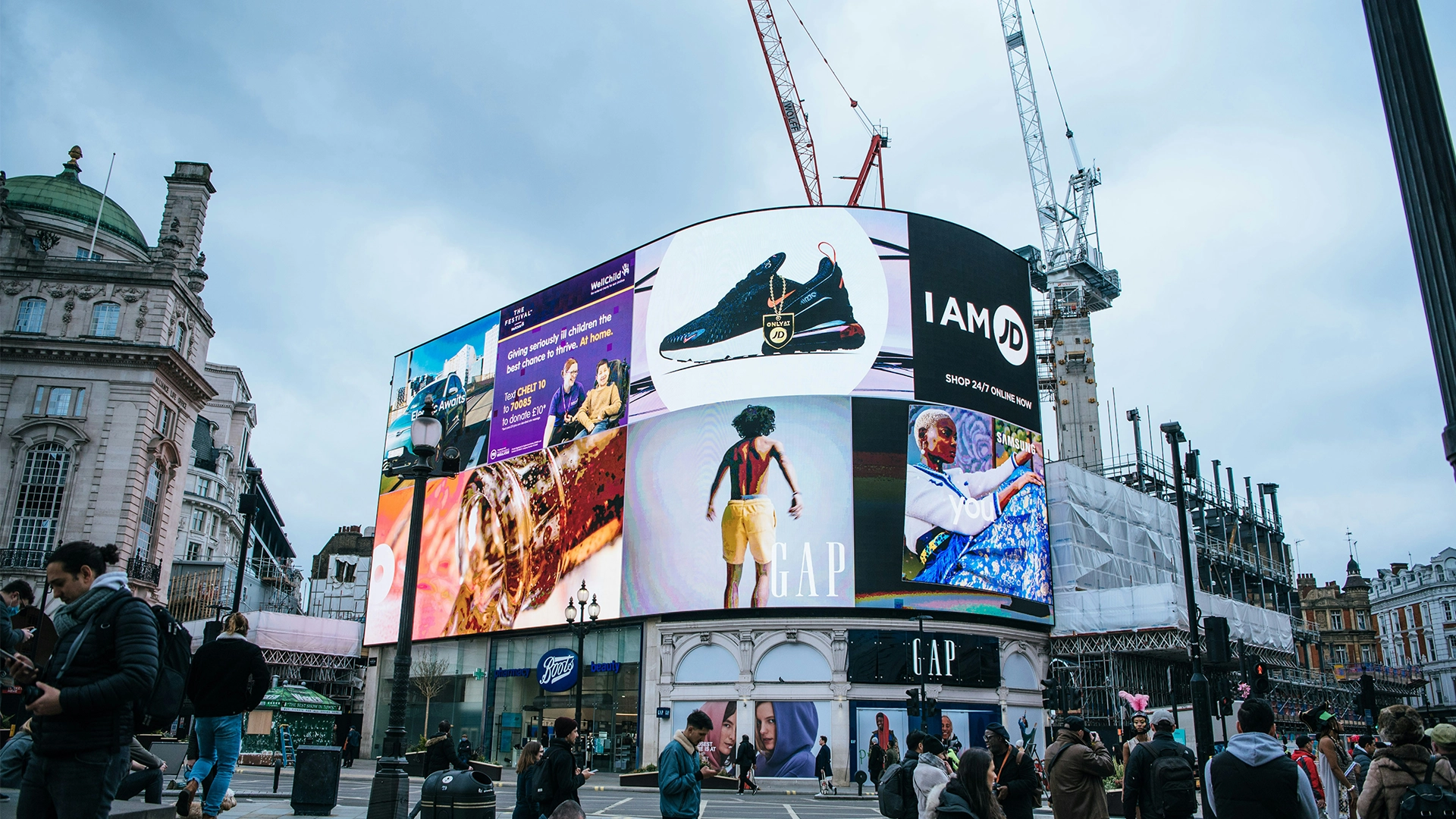
What is OOH Marketing?
OOH & DOOH Marketing are abbreviated expressions commonly used for “Out-of-Home Marketing” which refers to any advertising or promotional activity that consumers encounter or interact with outside of their homes.
This includes:
- Billboards
- Digital Billboard Advertising
- Transit ads – Bus, Train, Taxi
- Digital screens in public spaces
- Pop ups
- Outdoor advertising banners
- Installations
- Posters
- Other forms of advertising that target people while they are on the go, such as in transit or walking in urban areas.
OOH marketing aims to reach a wide range of consumers during their everyday lives and routines. This advertising technique has gained new prominence in today’s marketplace with the introduction of digitised displays and promotional OOH activities.
This enables brands to build awareness, drive exposure and promote their offering to consumers passing through high-traffic areas and locations.
Types of Out-of-Home Marketing
As we explore the complex ecosystem that is Out-of-Home (OOH) marketing, it becomes apparent that its strengths lie in the vast range of formats that can be achieved. From iconic billboards to interactive digital displays that engage passers by, the possibilities are endless. Each type of OOH marketing serves as a unique canvas for brands to convey their messages and drive awareness.
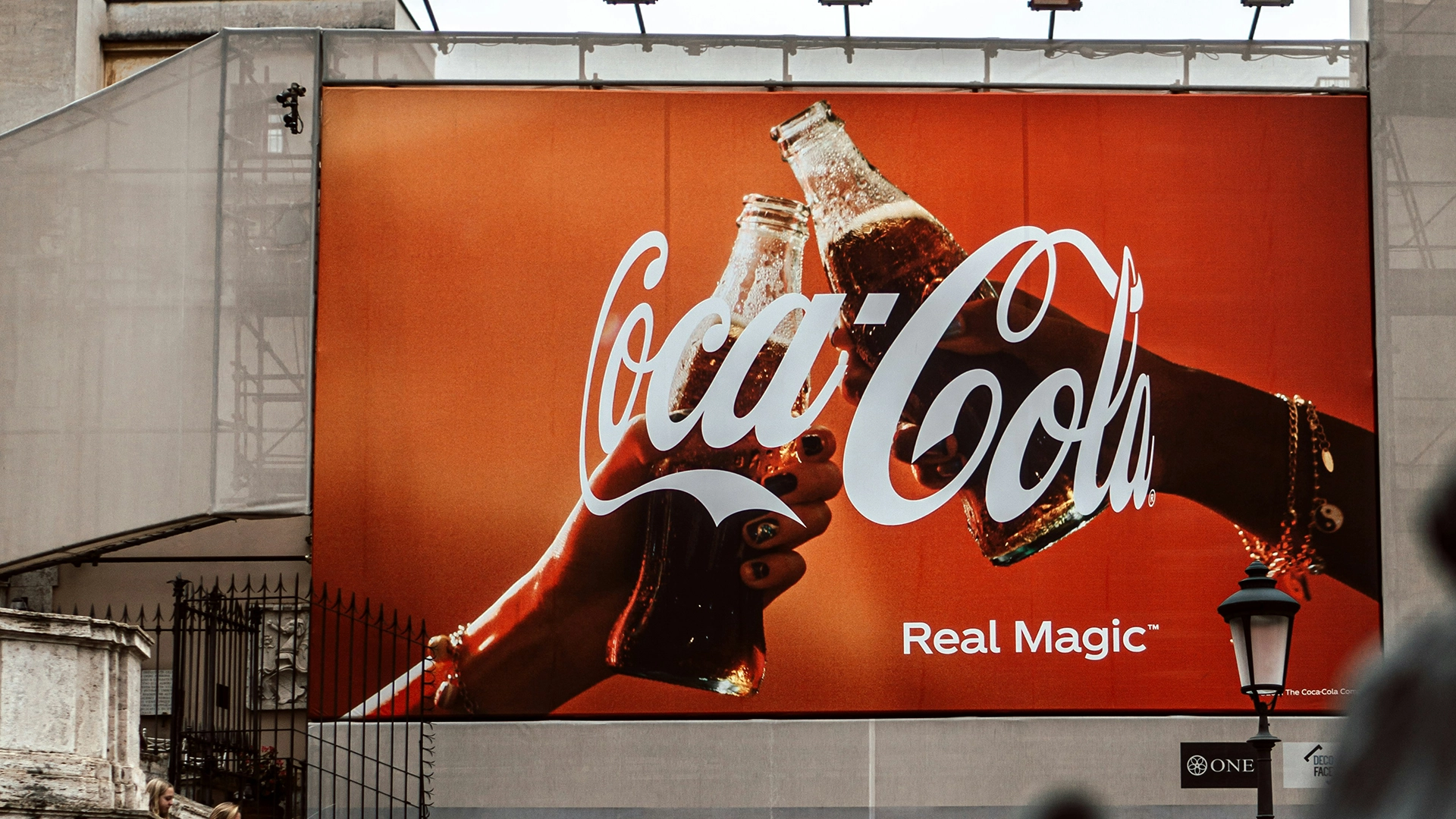
Traditional Forms
Billboards: Often seen above motorways, on roundabouts and urban city centres, billboards are the cornerstone of OOH advertising, capturing attention with concise yet impactful messages located in high traffic and footfall areas to ensure maximum effectiveness.
Transit Advertising: From bus wraps to train posters, taxi advertisements and even aeroplane ads, transit advertising leverages the constant movement of vehicles to extend brand visibility locally, regionally and even worldwide.
Street Furniture: This includes strategically placed advertisements on benches, kiosks, bus shelters, and even petrol pumps, integrating seamlessly into urban environments.
Point of Sale Displays: Placed strategically within retail spaces, these displays aim to influence purchasing decisions at the very moment of choice. They are also used as a key tools to attract customers walking by with enticing offers and sales.
Digital Out-of-Home (DOOH)
Digital Billboards: Digital OOH marketing is combining the visual power of traditional billboards with modern digital screens which are capable of showing rotating content, 3D graphics and high resolution video to create a long lasting and impactful message. Digital outdoor advertising offers flexibility and real-time messaging, while also having the advantage of video over standard imagery.
Interactive Kiosks: Touchpoints for consumer engagement, interactive kiosks such as branded stands and promotional pop ups bring a hands-on element to OOH marketing, allowing audiences to participate in brand experiences in real life.
Augmented Reality (AR) Campaigns: Blurring the lines between the physical and digital worlds, AR OOH campaigns overlay virtual content onto the real world environment, creating immersive brand interactions and displaying an innovative side to drive engagement. This can be achieved through AR apps and software which users can interact with.
Social Media Integration: Linking outdoor advertising campaigns with social media platforms through the use of QR codes and User Generated Content opportunities which enhance audience engagement, fostering online conversations around physical brand experiences.
Impact of Out-of-Home Advertising
Measuring impact is crucial for any marketing campaign especially for Out-of-Home (OOH) across various different ooh media. Being able to identify and measure awareness, marketing reach and other metrics are key to being successful. Often marketers find it hard to distinguish offline interactions with online ones but the connection is becoming clearer through improved integration.
3.79 ROI for retailers per every $1 spent on Out-Of-Home advertising
Creating an Effective OOH Campaign
Creating a successful Out-of-Home (OOH) campaign involves a calculated approach that goes beyond the conventional thinking of regular advertising. Here’s how you can get started.
Understanding the Target Audience for OOH
The effectiveness of an OOH campaign hinges on a deep understanding of the target audience you are trying to market to, including information about their preferences and lifestyles. Analysing demographic data and consumer insights enables marketers to tailor messages that resonate with specific groups of consumers and segments.
This ensures that the campaign achieves relevance and impact. While most outdoor advertising screens are not able to target their audience through online platforms, understanding your audience and where they go on a daily basis is key.
Creative Considerations and Best Practices
Creativity is the lifeblood of any successful OOH campaign, being the same as everyone else rarely proves successful. Making your OOH campaigns memorable and relatable will prove a power tool in capturing consumer attention.
From clear and precise messaging, eye-catching visuals and thinking outside the box, creating a long lasting impact will ensure consumers take action even after they saw the advertisement.
Integration with Other Marketing Channels for Synergy
In an interconnected marketing landscape with so many different marketing channels available to consumers, combining these channels is important for a successful campaign.
Many stand out campaigns have gained popularity through the sharing of online content mainly through user generated content which can often go viral online. This not only ensures that your out of home marketing campaign is effective but also that it transfers and complements your marketing reach and message.
As we reflect on the power and potential of Out-of-Home advertising, it becomes clear that this type of advertising is an immersive and impactful tool which can provide experiences to consumers that extends beyond screens, leaving a long lasting impact on the hearts and minds of consumers.
Innovations in Out-of-Home Marketing
Outdoor advertising and out of home marketing is undergoing a transformation, fuelled by technological advancements and innovations. It’s exciting to explore the cutting-edge developments that are reshaping the OOH space, from interactive experiences to real-time data utilisation.
Technological Advancements and Interactive Experiences
The integration of technology has enhanced the capabilities and effectiveness of OOH marketing. From augmented reality (AR) campaigns that are able to overlay digital content onto the physical world through the use of mobile devices and AR glasses, to interactive kiosks that invite audience engagement and participation.
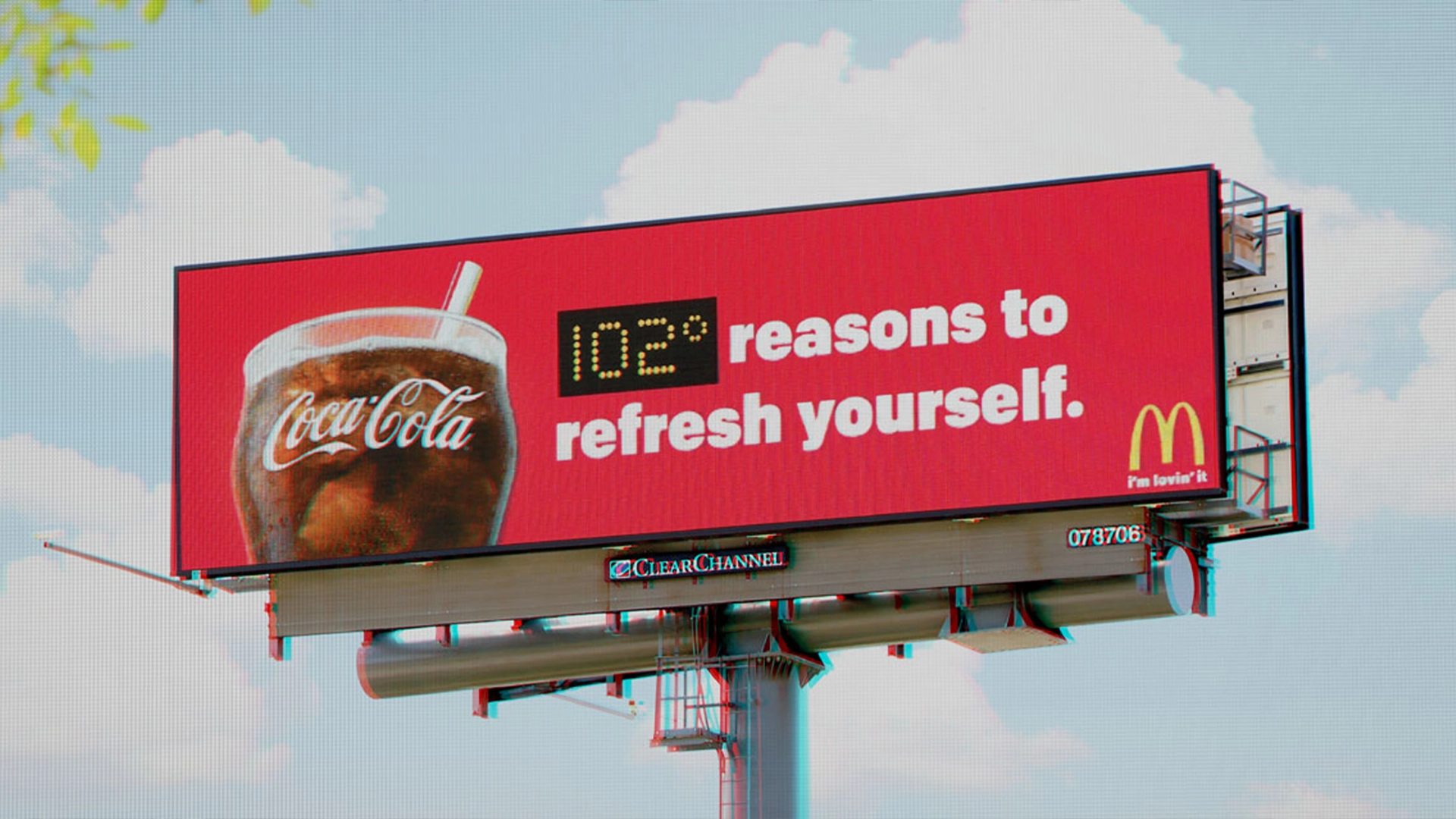
Real-Time Data Utilisation for Dynamic Campaigns
By harnessing real-time data, statistics and real world information, marketers can tailor content on digital billboards. Brands can begin to adapt messages based on variables such as time of day, weather conditions, or even social media trends to maximise impact and create a real time interactive experience.
This flexibility not only ensures relevance to consumers walking or driving by but also maximises the impact of OOH campaigns.
Emerging Trends Shaping the Future
As outdoor advertising continues to evolve, it’s essential to anticipate and conduct extensive research into emerging trends and new technological advancements which may complement our OOH campaigns.
From the integration of artificial intelligence (AI) for personalised targeting to sustainability-focused campaigns that resonate with environmentally conscious consumers these emerging trends can be utilised as a strategic tool to amplify your message. Understanding these trends is key to improving your campaigns and achieving results.
Frequently Asked Questions
Out-of-home (OOH) marketing, involves promoting different products, services, or brands through various physical media placed in public spaces and areas. Unlike other more traditional forms of marketing, such as digital or print advertising, OOH marketing targets audiences outside of their homes, such as on street billboards, on transportation ads, or in commercial areas of a city or town.
OOH marketing offers several advantages which include increased visibility, wider reach, extended exposure, and the ability to advertise to a diverse audience. Additionally, OOH marketing can complement digital campaigns by increasing brand awareness and driving offline actions, such as footfall traffic to physical stores or locations.
Outdoor advertising types range with various formats available to marketers, including billboards, transit ads (e.g., buses, trains, subway stations), public infrastructure (e.g., benches, kiosks), and digital screens (e.g., digital billboards, interactive displays). Each format has its own unique characteristics, benefits, used and target audience, allowing advertisers to choose the most suitable option based on their marketing campaign objectives.
A variety of studies have shown that OOH marketing and advertising can effectively capture consumers’ attention, increase brand recall, and influence purchasing decisions in an online and offline setting. The strategic placement of OOH ads in high-traffic areas throughout busy commuting areas or city centres, ensures maximum exposure to all target audiences, resulting in enhanced brand recognition and engagement.
Businesses can evaluate and measure the effectiveness of their outdoor advertising campaigns through various different metrics, such as reach, frequency, impressions, and return on investment (ROI). Additionally, advancements in technology, such as GPS tracking and mobile data analytics, enable advertisers to gather valuable insights into consumer behaviour, demographics and campaign performance in real-time through click through analysis and other methods.
The future of outdoor advertising and marketing is influenced by emerging trends like augmented reality (AR) and geofencing, OOH campaigns are becoming more interactive and personalised to individual consumers, offering brands new opportunities to engage with consumers in meaningful ways.
More interesting content...
Like this story? Share it on your social media...
For more of the latest content, why not subscribe to our mailing list...


